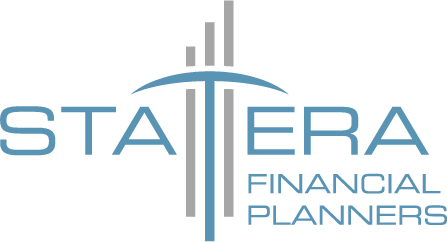Building Your Retirement Plan in Edmonton

Introduction
Planning for retirement is an important step towards ensuring a comfortable and worry-free future. Without a solid plan, the future can feel uncertain. Having clear goals and a robust financial strategy helps set you on the path to a secure retirement.
For many people in Edmonton, understanding how to save effectively and managing investment risks can be challenging. It's not enough to save money; knowing how and where to invest can make a significant difference in how much you accumulate by retirement age. Being aware of market highs and lows and choosing the right investment opportunities can safeguard your savings.
Healthcare is another crucial aspect to factor into your retirement planning. As healthcare costs continue to rise, having a dedicated plan to cover these expenses is vital. Prioritizing healthcare planning ensures that you can afford the care you need without depleting your savings.
Taking charge of your retirement involves careful planning and informed decision-making. By focusing on your financial goals, savings strategies, investment management, and healthcare planning, you can build a retirement plan that promises a secure and comfortable future.
Understanding Your Retirement Goals
Before you start saving, it’s important to understand your retirement goals. What do you want your retirement to look like? Do you plan to travel, pursue hobbies, or spend time with family? These questions will help you figure out how much money you need to save.
Begin by estimating your post-retirement expenses. Include costs for housing, food, transportation, and leisure activities. Don’t forget to account for inflation, which can increase your future expenses. Knowing these costs will provide a clear target for your savings.
Set specific, measurable goals. Instead of saying "I want to retire comfortably," define what "comfortably" means to you. How much will you need monthly or yearly? Setting clear goals makes it easier to create a solid financial plan.
Maximizing Your Retirement Savings
Once you know your goals, the next step is to maximize your retirement savings. Start by taking full advantage of employer-sponsored retirement plans, like RRSPs (Registered Retirement Savings Plans). Contribute as much as you can, especially if your employer offers matching contributions.
Open a TFSA (Tax-Free Savings Account) to save additional funds. Withdrawals from a TFSA are tax-free, which makes it an excellent tool for retirement savings. Contributing regularly to both RRSPs and TFSAs can significantly boost your retirement funds.
Consider other investment options such as stocks, bonds, and mutual funds. Diversifying your portfolio spreads the risk and can lead to better returns. Consult a financial planner to ensure your investment choices align with your retirement goals.
Consistently review and adjust your savings plan. Life changes, like marriage, children, or career shifts, can impact your retirement plans. Regular reviews help you stay on track and make necessary adjustments. By maximizing your savings efforts, you can build a strong financial foundation for your retirement.
Managing Investment Risks
Investing for retirement comes with its share of risks. Managing these risks is crucial to safeguard your savings. Diversification is a key strategy to reduce risk. By spreading your investments across different asset classes like stocks, bonds, and real estate, you decrease the impact of a poor-performing investment on your overall portfolio.
Another way to manage risk is to invest based on your risk tolerance and time horizon. Younger individuals might afford to take more risks, potentially receiving higher returns because they have time to recover from market downfalls. Those closer to retirement should lean towards more conservative investments that offer stability and preserve capital.
Regularly reviewing your investment portfolio helps you stay on track with your goals. Market conditions change, and your investments might need adjustment. Consulting with a financial advisor ensures you make informed decisions and adjust your strategy as needed. By managing your investment risks wisely, you protect your retirement savings and increase the chances of meeting your retirement goals.
Planning for Healthcare Costs
Healthcare costs can be a substantial part of your retirement expenses. Planning for these costs is essential to avoid financial strain. Start by estimating your future healthcare needs and potential costs. Consider expenses like prescriptions, regular check-ups, and potential long-term care.
Look into government programs like Canada’s public healthcare system, which covers many basic needs. However, be aware that not all healthcare services are included. Private health insurance can fill gaps and cover services such as dental, vision, and prescription drugs. Evaluating different insurance plans helps you find coverage that suits your needs and budget.
Setting aside a healthcare fund as part of your retirement savings is also a smart strategy. Having dedicated savings for healthcare can prevent these costs from eating into your regular savings. Regularly review and update your healthcare plan to match your changing needs and ensure you’re prepared for any medical expenses.
Conclusion
Securing your retirement in Edmonton requires careful planning and proactive steps. Understanding your retirement goals sets a clear path to follow. Maximizing your savings, managing investment risks, and planning for healthcare costs ensure you are well-prepared for the future.
Creating a comprehensive retirement plan doesn't have to be overwhelming. By breaking it down into manageable steps and seeking professional guidance when necessary, you can confidently build a secure retirement plan. Taking control of your financial future today lays the groundwork for a comfortable and worry-free retirement.
For expert assistance in planning your retirement, trust the professionals at Statera Financial Planners in Edmonton. Contact Statera Financial Planners today to start building a tailored retirement plan that meets your unique needs and goals. Your secure retirement begins with the right guidance and support from the best Edmonton financial advisors!

As financial planners, we do not provide specific tax and legal advice. You should always consult your accountant and/or lawyer where necessary. Because of the many ways a strategy may be impacted when segmented, we prefer to communicate collectively with your external professionals to ensure that all recommendations and action plans are in the overall best interest of you, with your professionals working with common goals in mind.
You are never obligated to act on our recommendations of products, services, or advice.
